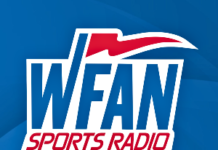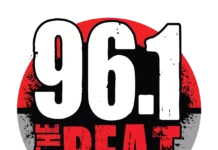
(By Mike McVay) NAB Show 2023 is underway in Las Vegas. Saturday, I participated in the Small & Medium Market Forum where I served as one of the hosts in the Round Table Discussions. The topic that I addressed was Recruiting On-Air Talent. Additional topics included Recruiting Salespeople and Sales Team Structure and Bonusing, Growing Local Direct Revenue, Digital Promotions and Digital Advertising, Generating Event and Non-Traditional Revenue, Increasing Your Community Standing, Operational Cost Savings, and Practical Applications for ChatGPT.
The session was well attended with many small and medium market broadcasters engaged in their own education, looking for ideas and concepts to “borrow” and to share their experiences with like-minded individuals in similar situations. There is an enthusiasm that one sees among smaller market operators as they’re engaged and directly responsible for the success or failure of their properties. There is a different level of personal investment and a greater connection to their community. These generalizations are not universal, but more times than not, they’re relevant to small and medium market competitors.
Keeping in mind that during 2020, at the height of the pandemic and before the world started to reopen, large and major radio markets were reporting revenue decreases year-over-year as high as 40%, while some small and medium markets were between down slightly to up slightly. The NAB in the Spring of 2021 was virtual and I moderated a panel discussion that included a variety of executives at varying levels. A COO of a major company, the Market Manager of a small southern market, a Corporate Program Director, a Major Market PD, and a Small Market Programmer.
The eye-opener from that session was that the small market operator was up in revenue 2020 versus 2019. A rarity overall, but several small market managers I spoke to had similar situations. One gave no-charge advertising for April and May allowing the cluster’s clients to continue their business … and they witnessed firsthand the power of advertising on the radio. Rates slowly increased in June and were back to full rate in July. One would expect that many of those advertisers will be clients for life.
Smaller market operators, those not owned by the biggest broadcast companies, tend to be more nimble, scrappy, and can react quickly. Clearly, not all operators in small and medium markets execute in the same fashion. Obviously, there are exceptions where small market stations, owned by big corporations, do excel. My supposition to put forth is that it is where the Market Manager has the ability to act on their own being responsive to conditions in their market.
Despite significant competition in Major Markets, it’s sometimes easier to win in those situations where you have the tools to compete. This is why I’ve always marveled at the most successful of the smaller market operators. They have to be involved in the community. Direct business is their life source. They visit potential advertisers, agencies, and merchants and strive to know the civic leaders in their communities. They’re often personally invested in seeing a community improve as it is their community, too.
This session was full of optimism, but the acknowledgment that the slowing economy is slowing the revenue stream for many in media. That is true regardless of market size. The slowdown should impact small and medium markets less critically, but that’s dependent on how the word “scrappy” fits your culture. How many remote broadcasts can you sell? Do you have talent who know how to believably endorse an advertiser’s product, services, or goods? Do your on-air personalities sound like they’re local?
It’s not the size of the market in the fight. It’s the size of the fight in the market.
Mike McVay is President of McVay Media and can be reached at [email protected]. Read Mike’s Radio Ink archives here.






